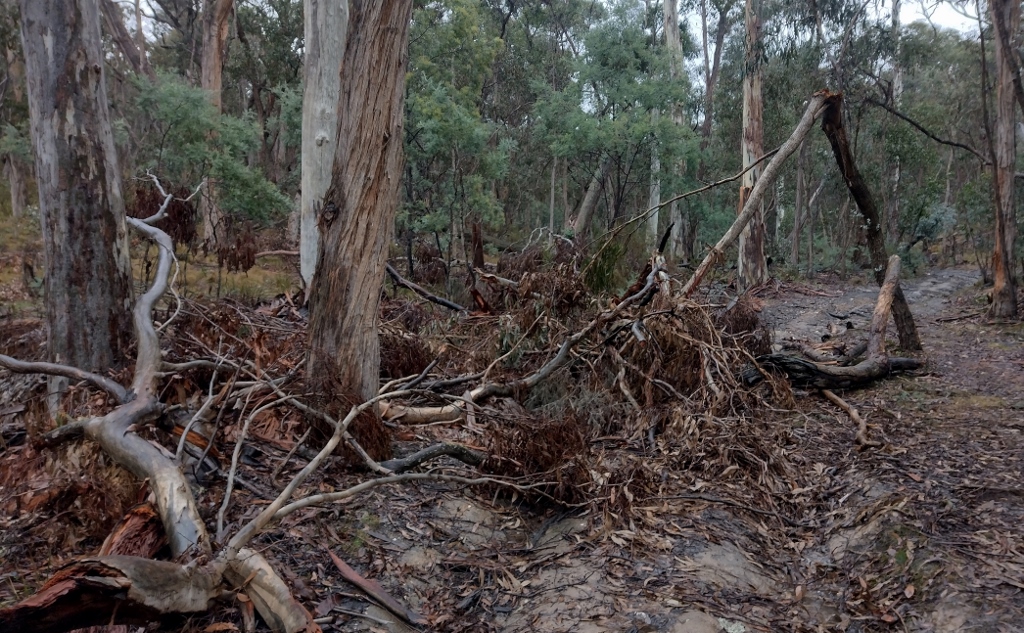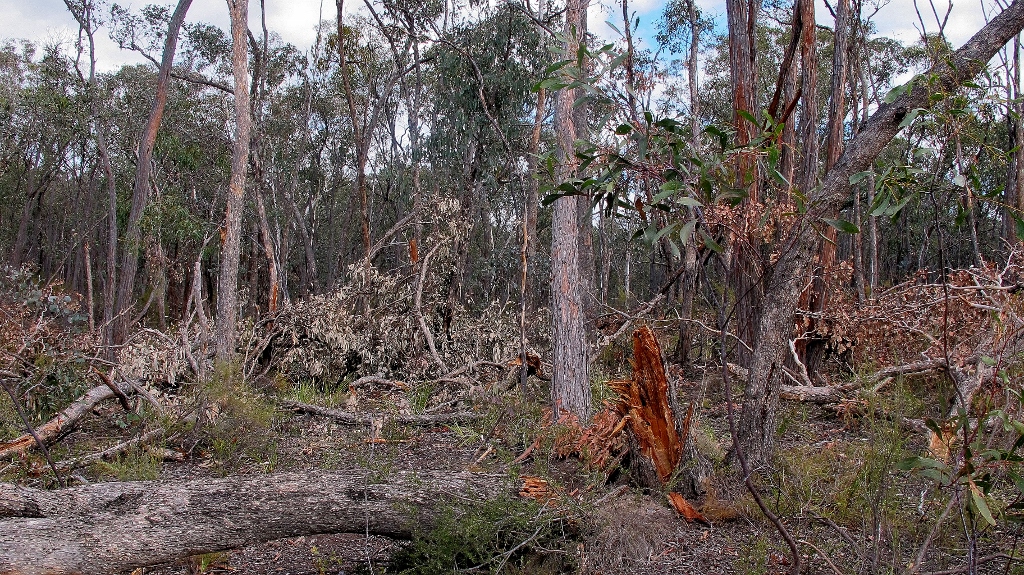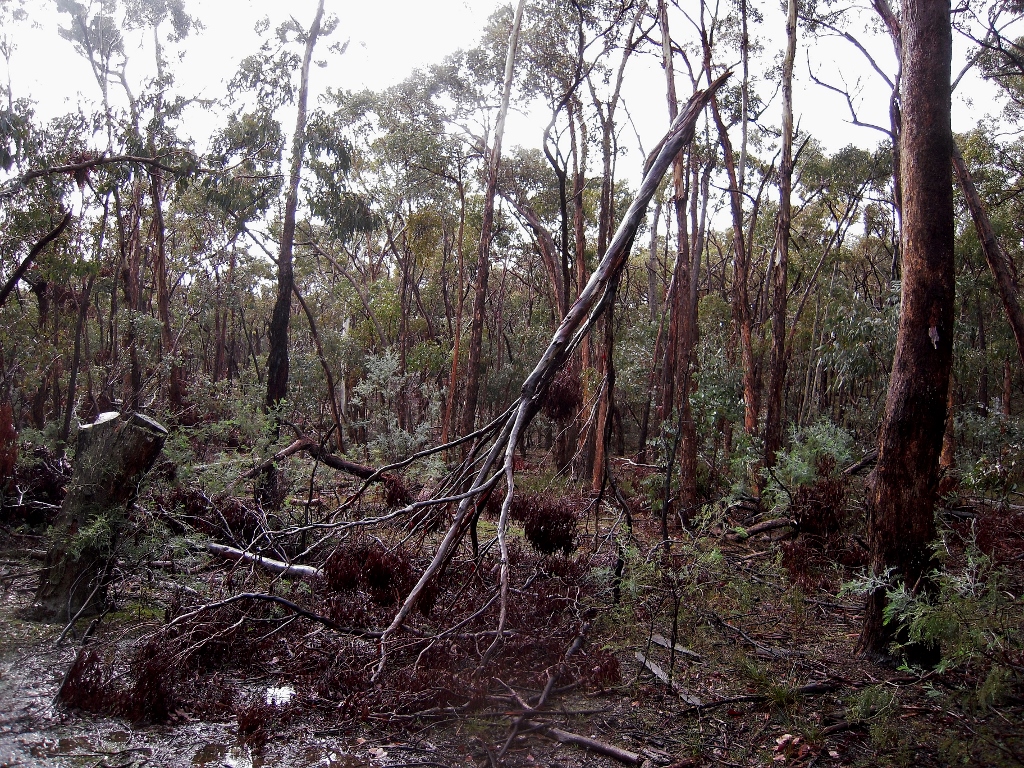Visitors to our bushlands can come across them surprisingly often: patches, usually quite limited in area, in which it seems that a monster has threshed around, snapping substantial trees and spreading havoc.
Storm damage: sometimes it can be terrifying, and the damage extensive. An example is the Wombat Forest storm of 2021. In our region the impacts have been more limited, though you wouldn’t want to be around when the wind crashes in.
The fascinating question is, what’s the ecological impact of these events? After all, they’ve been happening for as long as the forest has existed. Forester Ron Hateley, in his 2010 book The Victorian bush, puts the question differently and more aggressively: ‘What’s wrong with dead trees and patches of dead forest?’ He proposes that such patches are important for the preservation of biodiversity, and that patches of dead or unhealthy trees are important components of a healthy forest. And in fact there’s plenty of research to show that disturbance is ‘an important requirement for forest regeneration’ and soil renewal. But of course, the nature and scale of the disturbance do matter.
It would be an interesting project to map storm damaged sites in our bushlands, and observe the changes that have followed them. In the meantime, maybe we shouldn’t necessarily be cast down on coming across a patch of blasted trees and crushed understorey. Maybe they’re sites of renewal.







 Click on image for info/order page
Click on image for info/order page Click on image for info/order page
Click on image for info/order page Click on image for info/order page
Click on image for info/order page




















